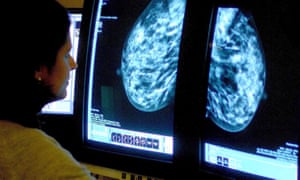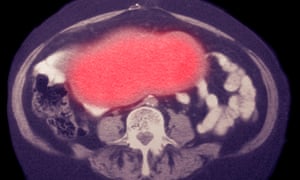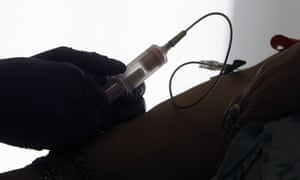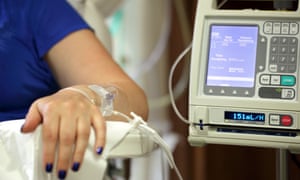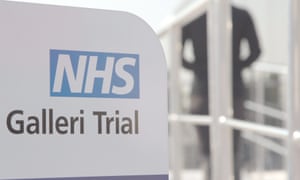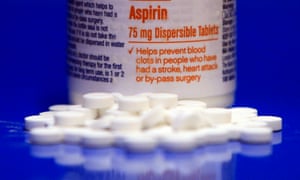Why Many People May Not Need Aspirin Today - One of aspirin’s beneficial effects is to prevent blood platelets from clumping and blocking blood flow,5,6 including inside a coronary or cerebral artery...
LIFE EXTENSION MAGAZINE
August 2019
By William Faloon
Starting in the 1970s, a number of published studies found that people who regularly took aspirin had reduced risk of heart attack and other vascular disorders.1-4
As evidence mounted, the FDA approved low-dose aspirin in 1998 to treat high-risk patients, including those who had already suffered a heart attack or ischemic stroke.
Tacit approval to take low-dose aspirin daily was also given for healthy adults concerned about occlusive vascular disorders.
One of aspirin’s beneficial effects is to prevent blood platelets from clumping and blocking blood flow,5,6 including inside a coronary or cerebral artery.
Back in the early years when aspirin demonstrated efficacy, the typical Americans’ behavior patterns put them at high risk for abnormal platelet clumping, which in turn caused soaring numbers of heart attacks and strokes.7
In the period of 1980 to 2014, however, death rates from cardiovascular disease incrementally plummeted by 50%.8
This improvement coincides with better control of blood pressure and lipids, and a decrease in smoking tobacco,5,6 along with changing dietary practices and improved cardiovascular procedures and interventions.
Overlooked by the mainstream is an almost 20-fold increase in the use of dietary supplements, many of which have many similar effects as aspirin in protecting the cardiovascular system.9
Recent studies are finding that aspirin is not reducing heart attack/stroke risk in today’s healthier American population compared to earlier decades.5,6 Aspirin is still proving effective in certain high-risk groups, as will be described in this editorial.5,10
So the debate swirling in medical settings is whether otherwise healthy Americans should continue taking low-dose aspirin.
Our analysis reveals that adults at low risk of cardiovascular disease who control their risk factors, including protecting against abnormal platelet clumping, may not need daily low-dose aspirin. This editorial describes our rationale.
If we travel back to the 1950s-1970s era, a typical American man or woman might, after waking up, eat a breakfast consisting of bacon, eggs, and buttered toast, with sugar and/or cream-laden coffee. Many would also light up a cigarette.
The morning hours are when blood platelets are most “sticky.”
Mornings are also when most sudden heart attacks were occurring in those decades.11
Consumption of polyphenol-rich fruits, vegetables, and dietary supplements in this 1950s-1970s period was low.
Systolic blood pressure over 150mmHg was quite normal, and many people had high cholesterol levels,12,13 sometimes exceeding 300 mg/dL.
Add together the above five paragraphs and you may see why sudden-death heart attacks surged to epidemic levels during the 1950s-1970s period.
Typical breakfast foods consumed in that time period increased abnormal platelet aggregation (clumping), smoking caused more platelet clumping, and few anti-platelet-clumping foods or nutrients were consumed.
So, when studies published in the prior decades identified regular aspirin users as having reduced heart attack rates, there was a biological explanation for this, since aspirin markedly lowered the platelet clumping that was encouraged by typical lifestyles during this era.
What Has Changed Today?
Even a cursory look at health behavior patterns in the 1950s-1970s compared to recent years reveals startling changes.
There have been huge reductions in average blood pressure readings and lipid numbers.12,14,15 These two factors alone dramatically reduce platelet clumping (thrombotic) risks.16,17
Dietary practices among health conscious individuals reduce or eliminate breakfast foods like bacon, ham, and fried eggs that contribute to platelet aggregation.
Specifically, health-conscious individuals have become aware that ingestion of saturated fats (and certain other fats like trans-fats) is a culprit behind platelet aggregation and subsequent coronary heart attacks and ischemic strokes.
Tobacco usage has plummeted18 while intake of nutrients that protect against platelet aggregation has soared.
Stated succinctly, there is no comparison between the vascular health status of the typical American in the 1950s-1970s and the same indices in more recent decades.
Plummeting incidences of heart attacks and strokes caused by abnormal platelet aggregation attest to this.
So, while aspirin saved many lives in the past, it may not have this same effect today. That’s because there is far less abnormal platelet clumping and thus less coronary or cerebral artery blockage (occlusion) happening.5,6
Nutrients That Impede Platelet Aggregation
Thrombosis is the leading cause of death in persons over age 50.20
The major cause of thrombosis is abnormal platelet aggregation (clumping) inside arteries and veins.
It is critical that aging persons follow anti-thrombotic practices that include ingesting nutrients that help prevent blood platelets from sticking together.
I believe every reader of Life Extension Magazine® is already taking many of these anti-platelet nutrients. They include plant polyphenols like curcumin, green tea, pine bark, and pomegranate, optimized forms of folate, vitamins B6 and B12, along with omega-3 fatty acids.21-27
These nutrients have differing anti-platelet properties. This is important because there are several mechanisms that cause abnormal platelet aggregation.
Compare what health-conscious Americans have done in recent decades to reduce their thrombotic heart attack and stroke risks to the 1950s-1970s period. The difference is night and day.
It helps explain why recent studies seeking to demonstrate the effect of aspirin on heart attack prevention in healthy people have largely failed to do so.28-32
Today’s radically altered health behavior patterns drastically reduce platelet stickiness. Further reducing platelet aggregation with aspirin may not add additional benefit to healthy people, as recent studies indicate.5,6
Blood Pressure and Platelet Aggregation
With each heartbeat, blood is pushed through your arteries into microscopic capillaries and then out through veins for return to your heart.
Elevated systolic blood pressure increases mechanical stress that compromises the integrity of the inner arterial wall called the endothelium. This can lead to a pro-inflammatory and pro-thrombotic state that is an underlying cause of heart attack or ischemic stroke.
Blood pressure guidelines in earlier years allowed levels that were too high. Back in those days medications to treat hypertension were not particularly effective compared to more recent decades.33
When aspirin was showing significant efficacy in reducing heart attack risk, people with high blood pressure, including prehypertension, were not adequately controlling it with diet, lifestyle, and medication.
This same problem persists today among people who are not proactive in protecting against vascular disease.
Average blood pressure readings have been dropping in recent decades in most population groups, though the growing number of overweight/obese individuals is counteracting this favorable trend.
Those who achieve better blood pressure control enjoy reduced platelet aggregation.34
These individuals are therefore less likely to benefit from daily aspirin use compared to past generations that lived with elevated blood pressure.
Lipids and Blood Pressure
In the early 1980s, the standard reference ranges for LDL cholesterol and triglycerides were too high. These antiquated reference ranges put many people at risk for coronary artery occlusion and subsequent heart attack (myocardial infarction) in earlier decades.
Elevated lipids accelerate atherosclerotic processes. This increases the risk of platelets aggregating around unstable arterial plaque and causing coronary and cerebral artery blockages.
Huge declines in average lipid levels beginning in the late 1980s provide further rationale for why aspirin is not demonstrating similar beneficial effects in more recent studies.5,6,12,15
Back in the previous period (1950s-1970s) little was done in the conventional setting to prevent atherosclerosis, be it diet, exercise, supplements or drugs.
These facts cannot be overstated. When Americans were suffering epidemic levels of heart attacks, laboratory reference ranges for blood lipids were frighteningly high.
This predisposed a large swath of Americans to abnormal platelet aggregation that aspirin helped protect against.
Many of today’s health-conscious people may no longer need this additional anti-platelet protection, as their blood pressure and blood lipids are markedly lower.
Who Should Take Aspirin?
The term “primary prevention” applies to the use of low-dose aspirin in seemingly healthy individuals who have elevated risk factors for coronary heart attack and ischemic stroke.
The box on the next page describes patient groups who should be taking low-dose aspirin for primary prevention, i.e. before they suffer a thrombotic heart attack or stroke.
The term “secondary prevention” applies to people who already suffer angina and/or severe coronary blockage, or are survivors of a heart attack, transient ischemia attack, ischemic stroke or other occlusive arterial disease.
For this group of individuals with preexisting vascular disease, aspirin is clearly established for secondary prevention, i.e. preventing another cardiovascular event.10,35
The debate going on now is what to recommend to normal, aging people with borderline vascular risks.
Alternative practitioners have long claimed the anti-platelet effects of healthy diets, exercise, and nutrient extracts that exhibit aspirin-like properties are more than sufficient.
The bottom line is that there are no clear-cut answers for otherwise healthy, aging people.
What Should You Do?
For many readers of this magazine, daily low-dose aspirin may be a reasonable option, but there is no real “typical” reader of this magazine.
I’m sometimes surprised that those who support our healthy longevity projects do not always optimize their own cardiovascular health.
What’s important to understand is that there are several mechanisms by which an abnormal clot can form inside a blood vessel.
By consuming a healthy diet, taking a spectrum of anti-platelet nutrients, and avoiding other platelet clumping factors, thrombotic risks are likely to be significantly reduced, and the published medical literature supports this.
For longer life,

William Faloon, Co-Founder
Life Extension Buyers Club
P.S. For an in-depth review of different approaches to reduce a hypercoagulability condition and/or abnormal platelet aggregation please visit our
blood-clot prevention protocol at:
LifeExtension.com/thrombosis
References
- Elwood PC, Cochrane AL, Burr ML, et al. A randomized controlled trial of acetyl salicylic acid in the secondary prevention of mortality from myocardial infarction. Br Med J. 1974 Mar 9;1(5905):436-40.
- Aspirin in coronary heart disease. The Coronary Drug Project Research Group. J Chronic Dis. 1976 Oct;29(10):625-42.
- Linos A, Worthington JW, O’Fallon W, et al. Effect of aspirin on prevention of coronary and cerebrovascular disease in patients with rheumatoid arthritis. A long-term follow-up study. Mayo Clin Proc. 1978 Sep;53(9):581-6.
- Breddin K, Loew D, Lechner K, et al. Secondary prevention of myocardial infarction. Comparison of acetylsalicylic acid, phenprocoumon and placebo. A multicenter two-year prospective study. Thromb Haemost. 1979 Feb 28;41(1):225-36.
- Arnett DK, Blumenthal RS, Albert MA, et al. 2019 ACC/AHA Guideline on the Primary Prevention of Cardiovascular Disease. Circulation. 2019 Mar 17:CIR0000000000000678.
- Ridker PM, Cook NR, Lee IM, et al. A randomized trial of low-dose aspirin in the primary prevention of cardiovascular disease in women. N Engl J Med. 2005 Mar 31;352(13):1293-304.
- Haft JI. Role of blood platelets in coronary artery disease. Am J Cardiol. 1979 Jun;43(6):1197-206.
- Roth GA, Dwyer-Lindgren L, Bertozzi-Villa A, et al. Trends and Patterns of Geographic Variation in Cardiovascular Mortality Among US Counties, 1980-2014. JAMA. 2017 May 16;317(19):1976-92.
- Available at: https://www.fda.gov/news-events/press-announcements/statement-fda-commissioner-scott-gottlieb-md-agencys-new-efforts-strengthen-regulation-dietary. Accessed May 31, 2019.
- Smith SC, Jr., Benjamin EJ, Bonow RO, et al. AHA/ACCF Secondary Prevention and Risk Reduction Therapy for Patients with Coronary and other Atherosclerotic Vascular Disease: 2011 update: a guideline from the American Heart Association and American College of Cardiology Foundation. Circulation. 2011 Nov 29;124(22):2458-73.
- Schwartz BG, Mayeda GS, Burstein S, et al. When and why do heart attacks occur? Cardiovascular triggers and their potential role. Hosp Pract (1995). 2010;38(3):144-52.
- Carroll MD, Lacher DA, Sorlie PD, et al. Trends in serum lipids and lipoproteins of adults, 1960-2002. JAMA. 2005 Oct 12;294(14):1773-81.
- Moser M. Historical perspectives on the management of hypertension. J Clin Hypertens (Greenwich). 2006 Aug;8(8 Suppl 2):15-20; quiz 39.
- Collaboration NCDRF. Worldwide trends in blood pressure from 1975 to 2015: a pooled analysis of 1479 population-based measurement studies with 19.1 million participants. Lancet. 2017 Jan 7;389(10064):37-55.
- Hopstock LA, Bonaa KH, Eggen AE, et al. Longitudinal and secular trends in total cholesterol levels and impact of lipid-lowering drug use among Norwegian women and men born in 1905-1977 in the population-based Tromso Study 1979-2016. BMJ Open. 2017 Aug 21;7(8):e015001.
- Blann AD, Nadar S, Lip GY. Pharmacological modulation of platelet function in hypertension. Hypertension. 2003 Jul;42(1):1-7.
- Sikora J, Kostka B, Marczyk I, et al. Effect of statins on platelet function in patients with hyperlipidemia. Arch Med Sci. 2013 Aug 30;9(4):622-8.
- CDC. Centers for Disease Control and Prevention. Achievements in Public Health, 1900-1999: Tobacco Use — United States, 1900-1999. MMWR. 1999;48(43):986-93.
- Available at: https://www.smithsonianmag.com/smart-news/only-15-percent-americans-smoke-180956504/. Accessed June 10, 2019.
- Becker Richard C. MD. Textbook of Coronary Thrombosis and Thrombolysis.
https://www.lifeextension.com/magazine/2019/8/as-we-see-it/page-01

